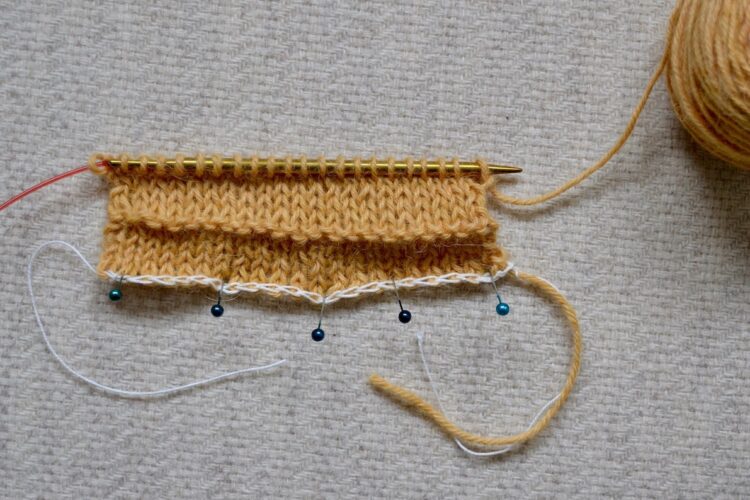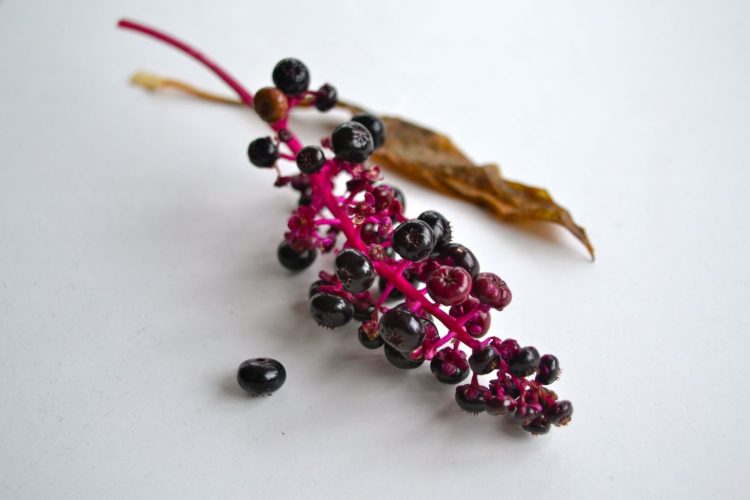Indian madder is one of European madder’s close relatives, and the two plants have both been part of human history for many centuries. Every natural dyer knows madder. Madder (Rubia tinctorum), which I’m going to refer to as European madder here, is one of the standard colors in the natural palette – the only good […]
A while ago, I wrote about turned hems. This technique is one of those I always return to because it gives such a nice finish. I’ve started using a version of the turned hem where increases are made at the same time as the hem is closed. Now, everything in knitting is probably already invented […]
There is a handful of dye plants that should be found in any dye garden. Woad is one of those, in my opinion. Woad is one of the very old cultivated dye plants – in Denmark, it has been cultivated since more than 2000 years ago. So although the plant gives rise to much less […]
Kilen is an easy-to-knit all garter stitch shawl. The long, narrow wedge shape is fun to knit and perfect to wrap a couple of times around your neck. I know. Several of my knitting patterns are a bit complicated. Instead of an ordinary cast on, I’ll oftentimes use a provisional cast on, because it gives […]
Cutch extract has a huge tannin content, making it almost universally useful to the natural dyer. It can be used both as a mordant and a dye. Cutch is an extract from the acacia tree, and it has almost as many applications as it has names: cutch, catechu, kath, seesiat, kasu, cacho, terra japonica…. The […]
Leaves from Japanese indigo and woad can be for a very rapid blue dye without adding anything else. The leaves just have to be fresh picked and you need to work quickly on ice! During last summer, I experimented a bit with ice dyeing, which is a well known method for dyeing with fresh Japanese […]
Cocheneal is truly an amazing insect, with its huge content of red dye. Along with madder, indigo, and yellow from local plants, it allows the natural dyer to dye all the colors of the rainbow. When the Spanish conquistadors arrived in present-day Mexico in 1519, they were on a treasure hunt – for gold and […]
This year was my first cultivating pokeberry in my dye garden. The small harvest, just a handfull of berries, turned into a fancy hot pink ink. The pokeberry plant (Phytolacca americana) grows as a weed in the eastern US, where the poisonous plant used to be eaten by poor people, who boiled it in several […]
The Iron Forest is an easy shawl in garter lace. The classic Shetland tree of life motif is framed only by a simple, straight garter edge. We have finally published our pattern for the Iron Forest Shawl. Often, “we” means “I, but I don’t want to say that”, but here, “we” really means we. My […]
July is usually the main season for both wild and cultivated dye plants. This year, the extremely hot and dry summer has been challenging for many plants. In early June, we moved into our large, new house. There’s plenty of room for my dye workshop (and the rest of the family), but the garden is […]









